I’ve linked before to my visual essay from 2019 but in light of the coming year, it should be posted here in its entirety.
(Originally created for the Bertelsmann Foundation, reprinted in the Washington Post)
I’ve linked before to my visual essay from 2019 but in light of the coming year, it should be posted here in its entirety.
(Originally created for the Bertelsmann Foundation, reprinted in the Washington Post)
Disney is buying Fubo and plans to merge the sports streaming platform with its Hulu + Live TV service, gaining 70 percent ownership of the company that up until today was suing it over antitrust concerns and allegations of anticompetitive practices.
According to Fubo’s announcement today, the unified company will be known as Fubo, and Fubo executives will run it. People will also continue to be able to subscribe to Fubo without subscribing to Hulu + Live TV and vice versa. Also part of the announcement is the revelation that Fubo has settled its antitrust lawsuit against Disney, Fox, and Warner Bros. Discovery (WBD) over Venu, a joint venture sports app that the companies plan to launch and that Fubo was seeking to block, citing the three firms' allegedly anticompetitive practices.
Fubo had previously claimed that Disney, Fox, and WBD had forced it to pay for irrelevant channels that don’t appeal to sports fans by bundling those networks with sports networks. Fubo’s lawsuit accused Disney and Fox of forcing it to spend millions on unwanted content and forcing it “to drop valuable channels” through price hikes.
Under the Disney merger, though, Fubo will seemingly gain access to channels that it wants. Per the announcement:
In connection with the Transaction, Disney will enter into a new carriage agreement with Fubo that will allow Fubo to create a new Sports & Broadcast service, featuring Disney’s premier sports and broadcast networks including ABC, ESPN, ESPN2, ESPNU, SECN, ACCN, ESPNEWS, as well as ESPN+.
Sweetening the deal is an agreement from Disney, Fox, and WBD to pay Fubo an aggregate cash payment of $220 million upon the deal’s closure.
The merger is still subject to regulatory and Fubo shareholder approval as well as “other customary closing conditions,” per Fubo. It’s expected to take 12 to 18 months to close, The Hollywood Reporter said.
Fubo's merger with Disney represents a shocking about-face for the sports-streaming provider, which previously had raised alarms (citing Citi research) about Disney's ownership of 54 percent of the US sports rights market—ESPN (26.8 percent), Fox (17.3 percent), and WBD (9.9 percent). Fubo successfully got a preliminary injunction against Venu in August, and a trial was scheduled for October 2025.
Fubo CEO David Gandler said in February that Disney, Fox, and WBD “are erecting insurmountable barriers that will effectively block any new competitors.
"Each of these companies has consistently engaged in anticompetitive practices that aim to monopolize the market, stifle any form of competition, create higher pricing for subscribers, and cheat consumers from deserved choice," Gandler also said at the time.
Now, set to be a Disney company, Fubo is singing a new tune, with its announcement claiming that the merger “will enhance consumer choice by making available a broad set of programming offerings.”
In a statement today, Gandler added that the merger will allow Fubo to “provide consumers with greater choice and flexibility" and "to scale effectively," while adding that the deal "strengthens Fubo’s balance sheet” and sets Fubo up for “positive cash flow.”
Ars Technica reached out to Fubo about its previously publicized antitrust and anticompetitive concerns, whether or not those concerns had been addressed, and new concerns that it has settled its lawsuit in favor of its own business needs rather than over a resolution of customer choice problems. Jennifer Press, Fubo SVP of communications, responded to our questions with a statement, saying in part:
We filed an antitrust suit against the Venu Sports partners last year because that product was intended to be exclusive. As its partners announced last year, consumers would only have access to the Venu content package from Venu, which would limit choice and competitive pricing.
The definitive agreement that Fubo signed with Disney today will actually bring more choice to the market. As part of the deal, Fubo extended carriage agreements with Disney and also Fox, enabling Fubo to create a new Sports and Broadcast service and other genre-based content packages. Additionally, as the antitrust litigation has been settled, the Venu Sports partners can choose to launch that product if they wish. The launch of these bundles will enhance consumer choice by making available a broad set of programming offerings.
Some remain skeptical about Disney buying out a company that was suing it over antitrust concerns.
"My initial reaction is that a defendant should not be able to buy its way out of antitrust liability by purchasing the plaintiff in a lawsuit. To the extent the plaintiff’s (Fubo’s) claims had any merit, then the deal will enshrine those anticompetitive effects,” Hal Singer, an economics professor at the University of Utah and managing director at Econ One, told Ars.
Lee Hepner, senior legal counsel at the American Economic Liberties Project, which had joined two amicus briefs supporting Fubo's lawsuit, said in a statement shared with Ars that Fubo had previously "led sports fans and industry observers to believe they were genuinely interested in challenging Disney’s illegal joint venture in sports streaming, only to cash a check and leave consumers and the entire streaming industry worse off.
"It’s a total deception," Hepner continued. "This deal does not resolve any of the concerns laid out by Fubo in litigation against Disney’s attempts to concentrate the sports streaming market and in fact worsens the status quo. We urge President-Elect Trump’s antitrust enforcers, along with state AGs and private stakeholders, to challenge this blatantly illegal deal to protect consumers and competition.”
A statement from the American Economic Liberties Project today also described the merger as "a troubling escalation" that showed Disney "reinforcing its dominance in the sports streaming market and silencing opposition to its monopolistic practices."
"This move will leave consumers with fewer choices, higher prices, and less innovation in an already concentrated industry," the group said.
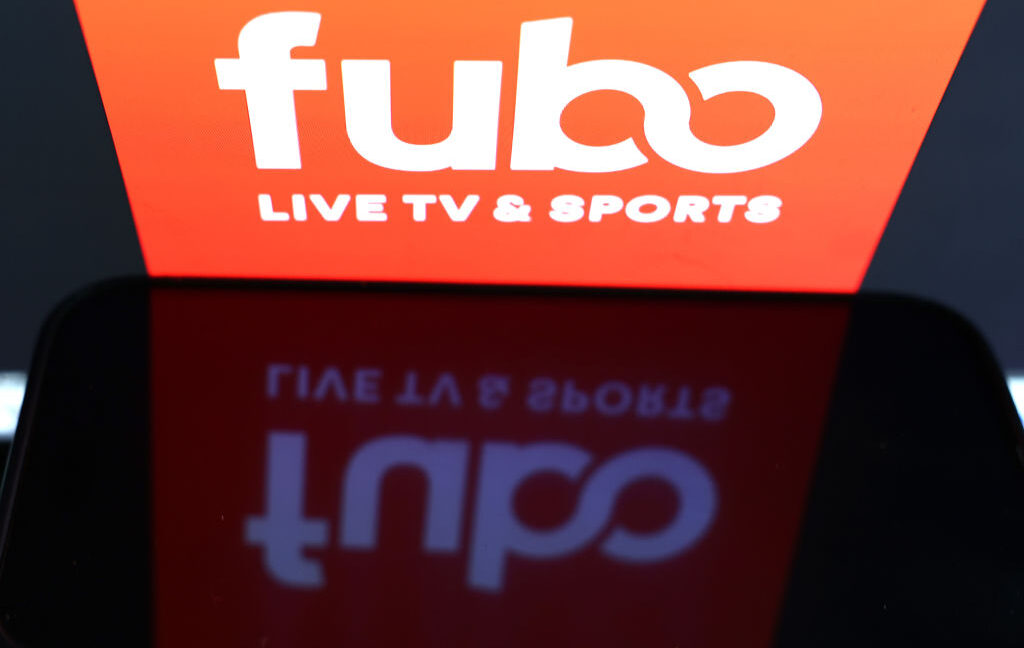

Many of Oahu’s best snorkeling and diving spots are associated with enclosed bays or natural coral reefs with large varieties of ocean life, while a few other sites are simply well-known because they are close to tourist locations. However, Electric Beach on the Waianae Coast (or the west coast) of Oahu is uniquely different from any other diving or snorkeling site in Hawai'i.
The beach, also referred to as Kahe Point, is located across the street from the Kahe Power Plant, which is operated by the Hawaiian Electric Company. The power plant uses seawater as a coolant, and the expelled seawater is relatively warm compared to the rest of the ocean surrounding Hawaii. As such, many sea creatures including colorful reef fish, sea turtles, and even dolphins seek out the area around the discharge pipe about 100 yards offshore.
Because of the currents generated by the intake and discharge pipes from the power plant, many guides recommend this location for intermediate to experienced snorkelers and divers. Additionally, swimming to the end of the discharge pipe could take some time. Nonetheless, the clear waters and wide variety of sea creatures make this one of the premier underwater locations in Hawaii.

The pastime of pinball has lived a fraught existence. Whether due to public sentiment, hostile legislation, or a simple lack of popularity, the entire silver ball industry has repeatedly teetered on the brink of collapse. Yet it has always come back, today again riding a wave of popularity driven by the successes of high-tech machines capitalizing on familiar brands like X-Men and Godzilla.
Pinball arcades are springing up everywhere, but private ownership is also surging. Those modern tables with their high-definition displays and brilliant LED lights are getting the most attention, but there is a breed of pinball enthusiast who not only owns a selection of classic machines but also obsessively maintains and restores them.
These collectors have just as much love for the maze of mechanicals beneath the surface as the trajectories the silver ball follows. The goal isn't high scores; it's keeping ornately complex vintage contraptions looking and playing like new.
That's an extreme challenge given some of those pinball machines date back to the 1940s and '50s, games designed to survive in the field for a year or two before being replaced. Keeping them properly flipping, dinging, and buzzing requires a good knowledge of electronics and a passion for troubleshooting—plus access to a dizzying array of specialized parts.
But one man, Steve Young, not only obsessively collects vintage pinball machines himself but has also acquired the dusty stockrooms and manufacturing components from the since-failed brands that built them. Over the past 50 years, he has built the world's greatest collection of rare parts and schematics that keep this detail-obsessed hobby humming. Along the way, he has also developed a unique way of running the business that has become The Pinball Resource.
Young doesn't really advertise these days, and finding his business, The Pinball Resource, is a little bit tricky. Yes, it's on Google Maps, but when you arrive at the building, you'll find just one small sign in a nondescript complex a few miles outside of Poughkeepsie, New York. It's situated between an auto repair shop and a beauty salon.
When I finally found the entrance, Young told me he intentionally keeps the signage to a minimum. He doesn't exactly want a lot of visitors.
A casual pinball fan might walk in expecting to see a room full of big-budget, licensed pinball machines, maybe a Jaws game sitting next to a John Wick, wedged in between any of a half-dozen Marvel-themed games, all blinking and blaring in full attract mode.
But The Pinball Resource doesn't have any of that on display. You're greeted by a couple of tired conference tables and endless filing cabinets. Yes, there are a few pinball machines in the next room, but they're half-covered in paper, serving as de facto cutting surfaces for the reprints of schematics and wiring diagrams duplicated by large-format printers.
Those repurposed machines date from the early 1950s, known as "wood rail" machines thanks to their reliance on maple and the like for much of their construction. Though simple by today's standards, the classic designs of these machines have earned them a legion of ardent fans.
"The art is fantastic," Young said, referencing a game called Knock Out, which dates from 1950. The machine depicts a boxing match, but there's far more fighting happening in the crowd, stylized brawls of all sorts. A clown is being led out on a stretcher. Shake the game too much, and a little speech bubble above his head lights up and says, "Tilt!"
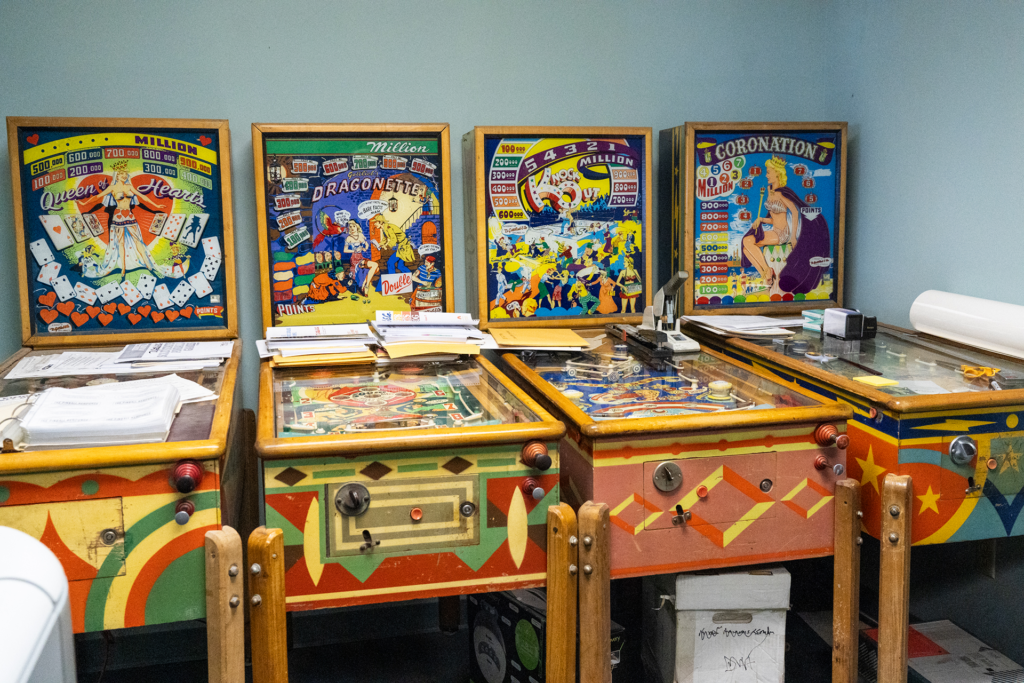 Pinball machines at The Pinball Resource.
Credit:
Tim Stevens
Pinball machines at The Pinball Resource.
Credit:
Tim Stevens
This machine dates from the so-called Golden Age of pinball, each game a certified piece of Americana, most designed and manufactured in Chicago. The origin of pinball itself, though, is rather more exotic.
For a game that feels refreshingly simple and two-dimensional compared to the latest PlayStation 5 and Xbox Series X releases, pinball has a surprisingly tumultuous history, involving everything from organized crime to Supreme Court rulings.
Its roots date back to an 18th-century single-player form of billiards called bagatelle designed to give bored French nobility something to do when the croquet lawn was too soggy for the delicate heels of their buckle shoes. Players hit balls upward on an inclined table, angling shots to land in pockets and earn points.
That humble game (which also spawned pachinko) evolved into something played behind glass, with players launching silver balls with a spring-loaded plunger, nudging the game to get the balls into holes and earn points. Those holes were framed with pins, giving this odd pastime its eventual name.
By the 1930s, Chicago was the global epicenter of pinball. Games popped up in bars and corner stores across the US, gaining some unwanted attention along the way. Some religious leaders claimed pinball was a source of moral corruption, while some police said pinball was part of organized crime rings. It was banned or restricted in many municipalities. New York City Mayor Fiorello La Guardia's goons dragged hundreds of games out of businesses and smashed them in the streets in the 1940s, creating a sea of broken glass and shattered wood not seen since the prohibition's frothier demolitions a decade earlier.
Despite all that, pinball survived. Manufacturers implemented rule changes to stay within the law, but things really took off after a game called Humpty Dumpty in 1947 made a minor addition that changed everything: the flipper. Chance and skill were now more evenly balanced, and the game's popularity exploded again.
But it still was a game lingering under a shadow of dubious legality. It wasn't until 1976, when pinball guru Roger Sharpe famously called a shot on a machine set up in a New York state courtroom, that pinball was officially designated a game of skill, not chance. This led to most of the restrictions across the country falling. The game entered another wave of popularity, setting the stage for a new generation of machines using modern, solid-state electronics.
It was about this time that something else began: The Pinball Resource.
Young's obsession with pinball dates back to the early '70s, when he was a college student at Lehigh University studying metallurgical engineering, a discipline that would eventually lead to a career at IBM. He and his friends became fascinated by the game.
"Being a bunch of engineers and math people and so forth, we got our fingers in there, and if we couldn't fix something, the tech came, and we'd watch him and learn from him," he said.
Eventually, Young and a friend began operating multiple machines, called "running a route" in the industry. "We had, like, 26 games out on campus at Lehigh. So, to maintain that, you've got to have parts." As Young's personal and professional pinball collections grew, so did his collection of parts, which he eventually started selling to others.
"By the time I graduated college, I had probably 30 or 40 games of my own outside of the games we were operating, and then I needed to maintain and fix those. And I kind of just stumbled into doing that, and I started advertising in some of the early magazines," Young said.
He took out an ad in Pinball Trader Newsletter, the biggest publication for the hobby at the time. The magazine's editor, Dennis Dodel, dubbed Young "The Pinball Resource."
"The name stuck," Young said.
If there's one thing you need to know about pinball machines, it's that they break—a lot. You'd never know it, thanks to the surprisingly effective sound-deadening properties of the glass under which it's played, but a game of pinball is shockingly violent. Each 80-gram silver ball gains remarkable inertia as it catapults from one target to another.
Remove the glass, fire up a game, and you'll quickly be reaching for some hearing protection. It's unpleasant, but playing like this is a good way to appreciate how much of a pounding a pinball machine takes every time you pull that plunger.
Factor into that hundreds of incandescent bulbs slowly baking all the machine's internals, plus grit and debris accumulating in every mechanism as the machine wears, and you have a recipe for something that needs a lot of attention to keep operating.
That violence made for short-lived games. "If you go back in the '50s, I think those games were designed for maybe 18 months on location, then they got traded back in," Young said. "Most big operators expected two or three years out of a game. Factories only supported them for five years."
Where modern, solid-state machines rely on software flashed to embedded systems, running on SoCs smaller than your thumbnail, earlier machines feature a far more convoluted set of mechanisms. These machines, called electromechanical (EM), instead rely on a series of discs and circuits to control the game's logic.
"This is like programming for electromechanical," Young said. "It's like programming a ROM, right? This is what made the game work the way it was supposed to work."
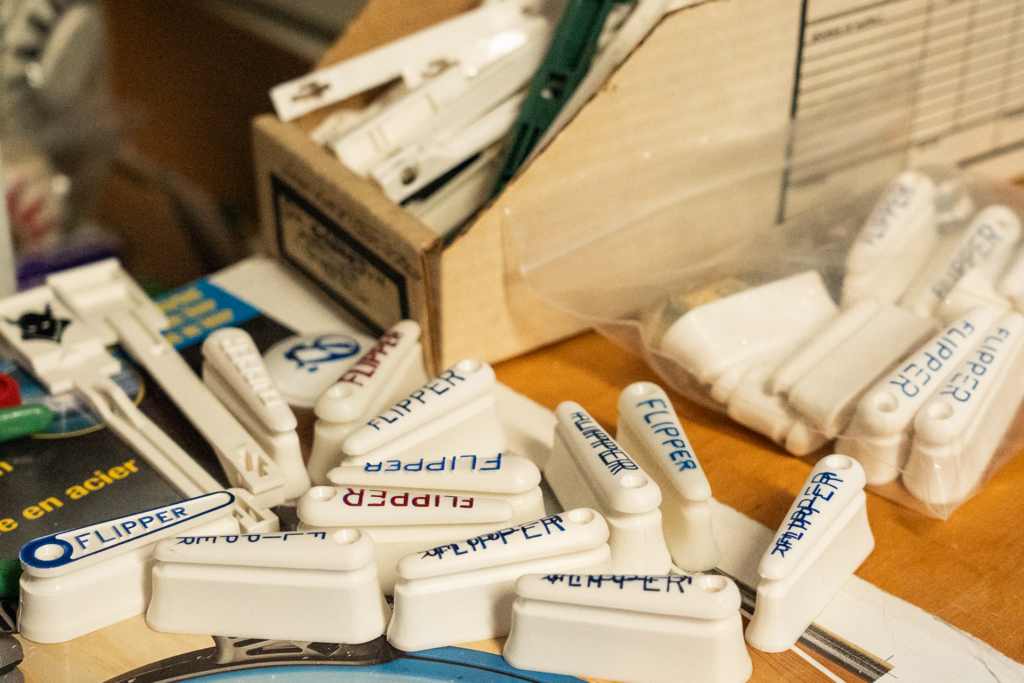 The workshop is full of parts for repairing machines.
Credit:
Tim Stevens
The workshop is full of parts for repairing machines.
Credit:
Tim Stevens
As the player progresses through the game, electric motors turn these wheels from one position to the next, advancing through different rules and bonuses.
Special when lit? Not if the wheel that controls that aspect of the game is missing or broken. But which discs go where, and in what orientation? Each game is a complex logic puzzle of circuits, switches, and relays, all connected through a wiring harness dizzying enough to make a rat seek shelter elsewhere.
Knowing how everything goes together requires extensive documentation and plenty of experience. Over the years, Young has gathered an unprecedented collection of both.
Gottlieb is the most historically significant brand in pinball. This is the company that introduced the flipper in 1947 and kept making games through to the mid-'90s. It survived the big pinball downturn in the early '80s brought on by the arrival of arcade video games, but it couldn't weather the next drought.
"There's a cycle of pinball. It's like a seven-year cycle, ups and downs and so forth," Young said. "Peak might have been about 1992 if you look at the number of games produced. It was like 120,000 games." But, from there, Young said, it was a steady decline of roughly 10 percent per year.
"Gottlieb closed in '95, and they moved the parts to their distributorship in New Jersey, with the idea of setting up a parts department," Young said. But, the company quickly changed its mind.
Young eventually bought out Gottlieb's backlog of parts and numerous pieces of manufacturing equipment, operating a revenue share with the company for a time before taking outright control of the inventory. That's how The Pinball Resource became the de facto source for all things Gottlieb, but it wouldn't end there.
"We've picked up all these pieces as the pinball business has shrunk and fallen apart," Young said. "I sat down once with a yellow pad, and I started writing down the number of distributors that I bought their stock, right? And I filled the side of the page and turned the page over before I got done."
Along with the truckloads of parts and specialized equipment have also come stacks and stacks of schematics for all these machines, some bearing hand-drawn corrections penned by long-retired engineers. They all lie stacked and ordered in a series of wide cabinets.
"This is probably one of the world's largest collections of schematics," Young said. "Every Gottlieb schematic in the world is in that filing cabinet." Schematics from other manufacturers sit nearby, along with endless manuals covering games from many brands and eras. I told him that the 1986 Williams machine High Speed was my favorite. Ten seconds later, he had the original manual in hand.
These manuals tell you which components you need if your machine isn't working, but a part number someone scrawled onto a sheet of draft paper in 1953 won't do you much good if that part went out of production sometime during the Eisenhower administration.
Thankfully, Young has you covered there, too. The Pinball Resource didn't just buy the parts from Gottlieb and others but also used numerous pieces in manufacturing.
Young took me into the storage and manufacturing area within The Pinball Resource, featuring shelf after shelf of parts plus tables covered with specialized machines.
"I have a lot of tooling set up over the world," he said. Rubber rings are a perpetual consumable in pinball machines. The little bumpers that cushion impacts take a beating. The Pinball Resource manufactures its own rings in Taiwan, using tooling acquired from yet another company's bankruptcy. Other parts are manufactured at a facility in pinball's traditional home of Chicago.
One item the company assembles at the company's New York headquarters is called a pop bumper cap, the colorful mushroom-shaped dome that covers the circular bumpers often found in clusters of threes on pinball playfields. There's an endless variety of colors and designs, many featuring custom embossed logos.
Creating these requires a specialized press that drives a heated brass stamp to create the logo, a process called hot stamping. Young has hundreds of these stamps to emboss everything from the American flag to Medusa's head. Some are decades-old originals. Others are modern reproductions he's sourced from artists, each costing upward of $500 to create. Young sells the caps they produce for $5 or $6 each.
Mechanical components receive just as much attention, including presses and punches to create the endless shapes and sizes of electronic switches required to ensure a machine accurately keeps score.
And then there's the coils. Pinball machines rely on small coils of wound copper wire, electromagnets that eject a plunger that pushes or pulls a mechanism to send the silver ball flying in a new direction. Young buys thousands of pounds of copper wire to wind custom coils in numerous sizes, even coming up with custom high-power models to make slow old games faster.
Sometimes, they're too fast. "I have a regular pop bumper coil, and I have a 'hot' pop bumper coil, and the hot one is too hot, okay? So, I'm trying to hone in on what a medium should be," Young said. "Everybody likes a medium, right? So I really want a little warmer pop bumper coil, but not a hot one. I don't want the lights to dim when the bumper pulls in."
Young also refines and improves upon original pinball parts known for failing early and often, subtly adding thickness or reinforcement to ensure that stressed components better survive the rigors of gameplay. "We try to make the part authentic to the original part, or better," he said. "You make the part, you might as well make the part right."
Improvements like these are thanks not only to Young's metallurgical background in the field but also thanks to the feedback he gets courtesy of the uniquely hands-on approach he takes to dealing with customers.
The Pinball Resource's website has a delightfully retro 1990s feel about it. Click your way through, and you'll find an endless list of parts and accessories in simple tables. What you won't find, though, is a "Buy it Now" button anywhere.
How do you order anything then? Well, you send an email or pick up the phone. Either way, don't be surprised if you hear from Young himself.
"I almost always call in my orders and talk to Steve. It's always informative and interesting. I'll only email an order for mundane supplies," Dave Golden told me. He's a Massachusetts-based pinball enthusiast who not only keeps busy maintaining his own collection of about 30 games but volunteers his time fixing machines at the ElectroMagnetic Pinball Museum in Rhode Island.
Golden estimates he's spent a couple of thousand dollars at The Pinball Resource since his first order in 2018, but plenty of Young's customers spend a lot more.
People like Levi Nayman, who runs Crazy Levi's Pinball, which restores and sells pinball machines in the metro New York area. He's been a Pinball Resource customer for over 20 years and has lost track of how much he's spent there buying hard-to-find parts. "I really have no idea, probably over $10k but it's not anything I've kept track of," he said.
What keeps Levi coming back? Steve Young. "He's got the stuff, the knowledge, and the personality," he said. "I also get my stuff overnight since it's so close."
Young fields questions from customers like Nayman every day, often firing a question or two right back at them.
Questions like: "Wait, what are you trying to do?"
With a complex system like a pinball machine, sometimes a misfiring coil or a flickering bulb can have a cause that's only tangentially related to the symptom. And so, Young frequently finds himself talking people out of ordering parts they don't need.
"I can't be comfortable taking people's money from lack of knowledge," he said. "I've had to be careful how I can do that because people take offense. 'You won't sell me that? What's the matter?' You know? 'Well, you really don't need it. Do this first.'"
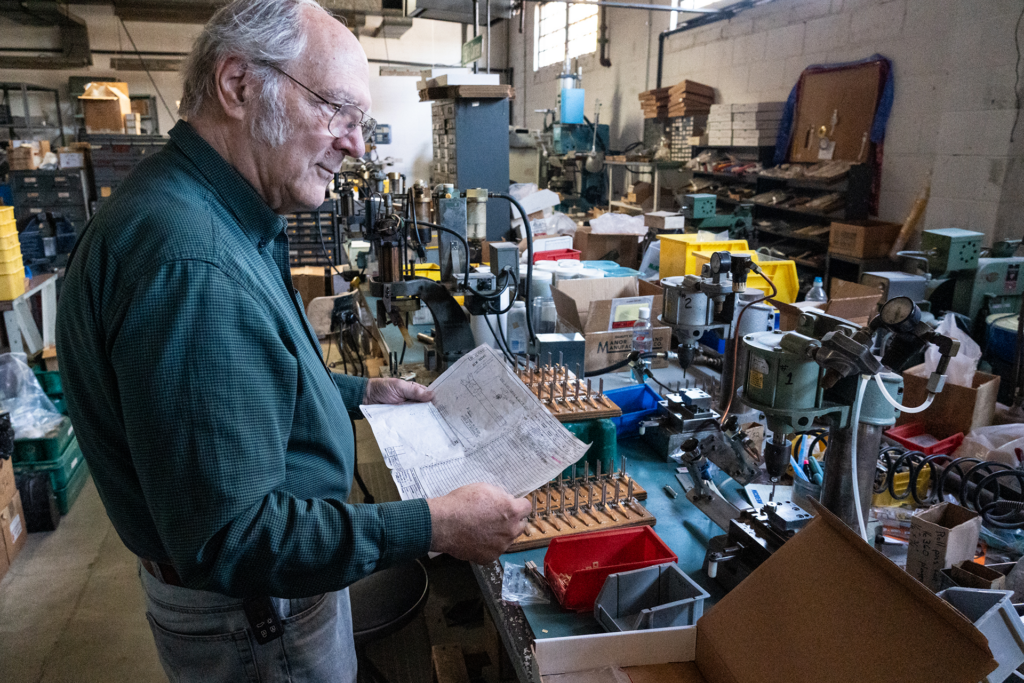 Steve Young poring through the shop's resources.
Credit:
Tim Stevens
Steve Young poring through the shop's resources.
Credit:
Tim Stevens
Regardless of which parts you order, you'll of course need to pay for them, and that leads to the final unusual aspect of The Pinball Resource's business model.
"I don't do credit cards. We don't do PayPal," Young said. Venmo, Zelle, and other digital forms of payment also rank on the no-fly list. Young takes checks, money orders, wire transfers, cash, and that's about it. These forms of payment can be slow, but orders don't wait: The Pinball Resource ships most orders before payment is received.
Young likens it to a sit-down restaurant, something that confuses a lot of new customers. "When you place your order, do you have to pay? Or, do you eat the meal first, and then they give you your check, and then you pay?" Young said. "People really appreciate the trust I place in them."
That attitude has earned The Pinball Resource a perfect five-star rating in online reviews from Google to Yelp, plus legions of loyal customers worldwide, each with a shared passion for keeping machines once considered disposable alive for the next generation to enjoy.
And that's what Young is dedicated to doing himself, though lately on a somewhat reduced scale. He's pared his personal collection of games down from over 200 to about 70. "I'm really focused on wood rails, so that kind of ends at 1960. And the more I work on them, the more my attention really narrows in on the span from maybe 1951 to '54 as being the creme de la creme in terms of play and artwork."
There's some interesting irony that a man who came into this hobby through a study of metallurgy prefers games known for their wooden construction, but in the intervening 50 years, Young has helped maintain countless machines of all generations. Given that, I asked him what advice he'd give anyone who's just bought their first machine, that one special game that somehow captured their imagination. I expected a suggestion about online user groups or specific tools worth investing in.
His response was a little different: "Don't turn your back on them," he said. "They multiply when you're not looking."
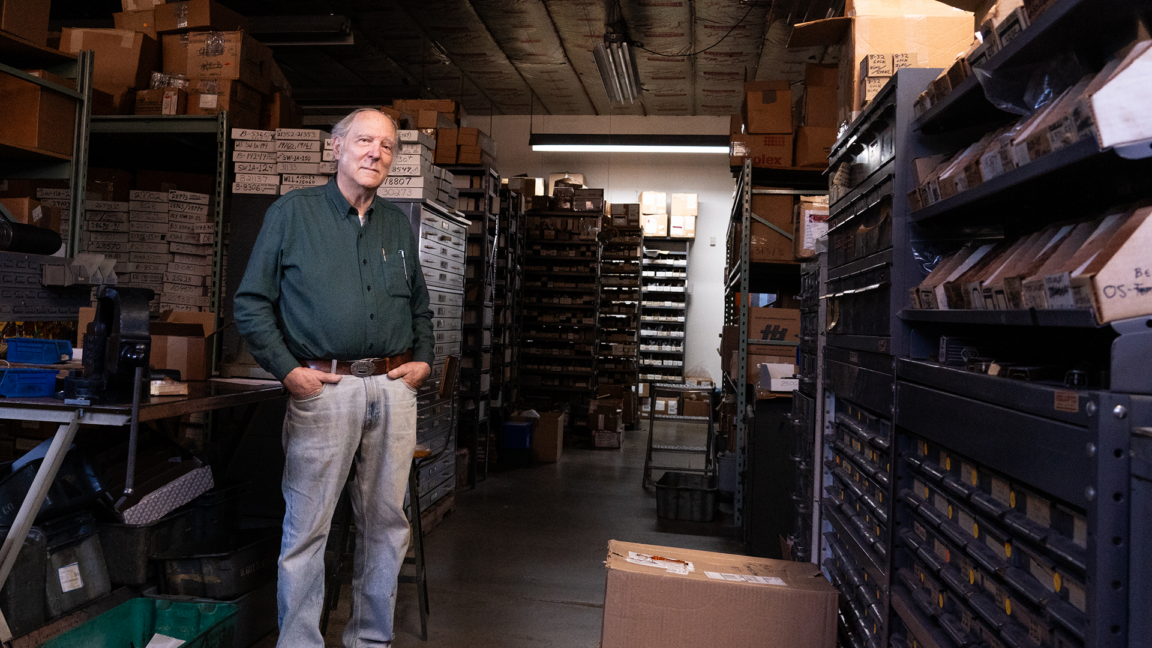

A few months before the first Cybertrucks were delivered to customers, Tesla CEO Elon Musk got on a call with investors and said he wanted to “temper expectations” about the polarizing vehicle.
“It’s a great product, but financially, it will take, I don’t know, a year to 18 months before it is a significant positive cash flow contributor,” Musk said in the October 2023 call. But, ever the showman, Musk couldn’t resist injecting some hype.
“The demand is off the charts,” he said. “We have over 1 million people who have reserved the car.”
But more than a year later, that demand appears to have dried up.
Yesterday, Tesla reported its fourth quarter production and delivery numbers for 2024, giving us as close to a complete picture of the Cybertruck’s first full year of sales as we’re going to get. Tesla doesn’t break out Cybertruck numbers specifically, instead lumping them in with its two older vehicles, the Model S and Model X, as “other models.”
Tesla said it produced 94,105 vehicles in that category in 2024, of which 85,133 were delivered to customers. Kevin Roberts, director of economic and market intelligence at CarGurus, estimates that between 35,000–50,000 of those “other models” sold over the course of the year were Cybertrucks.
“How you view the Cybertruck depends on what your expectations going in were,” Roberts tells me. “If you thought it was going to be a large volume vehicle, a la Ford F-150 competitor, it hasn’t become a large volume competitor. But if you compare it to, say, a lifestyle pickup or the Ford F-150 Lightning, I think it’s done pretty well.”
And yet, the Cybertruck did not meaningfully contribute to Tesla’s growth in 2024, as evidenced by the fact that the company reported its first year-over-year sales decline in over a decade.
Musk claimed that over 1 million people reserved a Cybertruck, and so far, that has not resulted in 1 million Cybertrucks on the road. To be sure, it’s still early days for the angular EV, and it could still prove to be a success. But Tesla lowered the deposit reservation to $100, after initially asking for $1,000, which likely boosted reservations among people who probably weren’t going to end up buying one.
And then there was the rocky rollout: the viral videos of a Cybertruck getting stuck in snow or sand; the numerous recalls (seven since its launch in December 2023), including one related to a faulty accelerator pedal; and Musk’s emergence as a stalwart supporter of Donald Trump and a purveyor of racist, rightwing conspiracies.
Even still, the Cybertruck seemed to come out of the gate strong. It was America’s best-selling electric truck in Q2 of 2024, the third-best-selling EV in the country in Q3, and the best-selling vehicle costing over $100,000 in the first half of the year.
In July, it almost matched combined sales of all other electric trucks on the market, including the Ford F-150 Lightning, Rivian R1T, GMC Hummer EV, and Chevy Silverado EV. But some analysts suggested that Tesla may have been filling a backlog of older orders at the time, which would suggest that the sales numbers weren’t related to increased demand.
But as the year went on, evidence emerged that the Cybertruck may have already passed its peak. There were anecdotal reports of Cybertrucks piling up on used car lots. Tesla Cybertruck factory workers in Austin were told to stay home for three days in December.
Meanwhile, dozens of limited edition Foundation Series Cybertrucks, the first version of the truck to go on sale, were piling up in the automaker’s inventory, leading Tesla to reportedly start buffing the badging off so they could be sold as regular models. And the price of a used Cybertruck keeps dropping: $104,300 on average on December 30th, down from $107,800 the month before, according to CarGurus.
“What’s going on with used Cybertrucks and we can see the number of days those vehicles have been sitting on lots has been going up,” Roberts says. “And the average price of used Cybertrucks has been trending down.”
A brand-new Cybertruck is still very, very expensive: leasing starts at around $900 a month, while someone interested in buying an all-wheel drive base model would be expected to drop at least $90,000.
/cdn.vox-cdn.com/uploads/chorus_asset/file/25605448/IMG_5464.jpeg) Image: Umar Shakir / The Verge
Image: Umar Shakir / The Verge
And while the Cybertruck just recently qualified for the federal EV tax credit of $7,500, that benefit is likely to be short-lived, as Trump is expected to kill the credit — with Musk’s backing. Musk still has a few more months to make good on his claim from 2023 that the Cybertruck will be a “significant cash flow contributor” within 18 months — but the outlook looks grim.
Tesla could have followed up the enormously successful Model Y with an even more affordable EV, which is what a lot of analysts and investors were expecting. But instead, Musk introduced a highly polarizing, questionably made, lifestyle vehicle that will likely never sell as many units as its predecessors.
“Tesla has had a big volume hit, the Model Y is in the top five selling vehicles in the US,” Roberts says. “So they can get those big volume vehicles. The Cybertruck just hasn’t been that. And it’s going to face some headwinds in 2025 that could make it a challenge for it to get to that kind of volume status.”